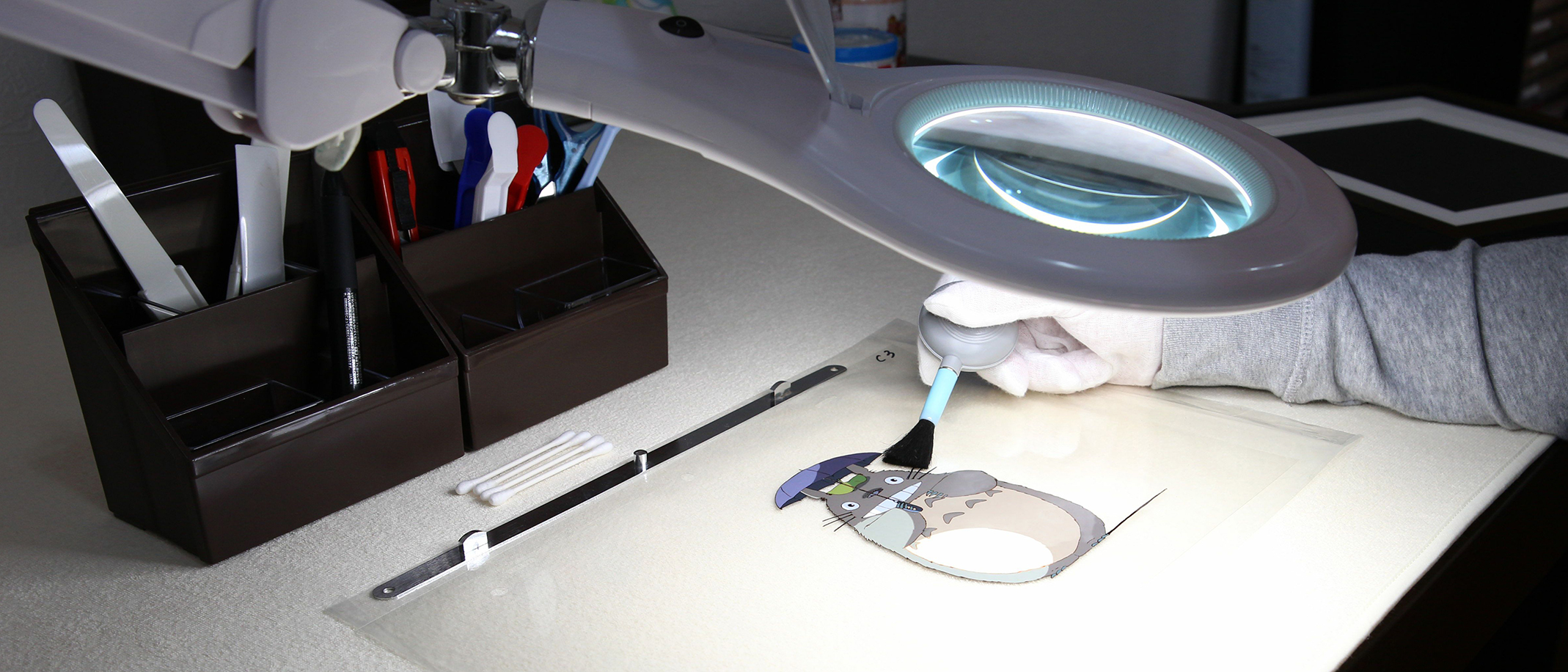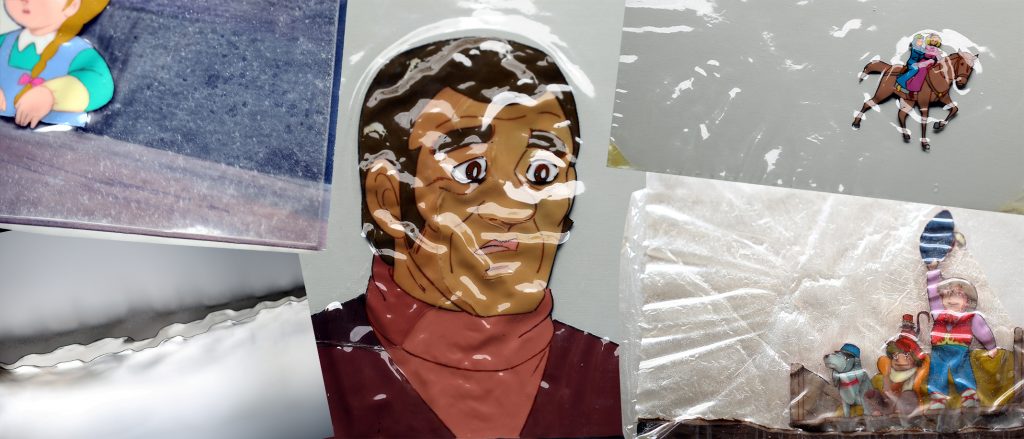
A little history of cels
The name “cel” is the contraction for the name “celluloid”. It is made of cellulose… Everything started in the early 1920’s with the nitrate of cellulose, a catastrophic type of “plastic”… A lot of old Disney cels ( Snow white, Pinocchio, etc…) are made of this type of nitrate. Later the “plastic” industry introduced the acetate of cellulose , then the bi-acetate and finally during the 80’s through 90’s the tri-acetate. With every new generation, the quality of the “plastic” became more stable, more transparent, etc… in one word , much better quality!
The majority of Japanese cels are made of tri-acetate, the best iteration of acetate cellulose! But even with the tri-acetate, a Japanese cel is still very fragile.
the fragility of an anime cel
First , you have to understand that cels were never made to be collected and kept for a long period of time , this is just a “part of a process” that animation studios used to make an animated movie. These were never made to be exposed in museums and treated like pieces of art… they were made to be a cheap and fast way to create animation movies.
In the mind of an animation studio, cels are NOT a final product, the Film is! cels are just a step in the production to make the final product : the movie. So in their mind, when a cel is done, they just shoot it, put it on a film and done! after that, well….. For the most part they were just thrown away, in the garbage! From Disney to Toei production, all studios, at some point threw their cels in the garbage…
That’s why it makes this “little piece of plastic” so rare and valuable today.
Now that we know that, we understand better why the materials used on cels are cheap and bad quality. And as everybody knows, bad quality material doesn’t last a very long time if you are not careful with it. So our lovely cels, if not kept in the right conditions, can go bad very quickly (20-30 years). But during our research, we found that if a cel is kept in the right condition, it can stay in a very good shape for a very long time (hundreds of years).
Manufacturing process of the “plastic” cel (acetate of cellulose)
Every acetate of cellulose is created the same way. A lot of different chemicals are involved in the process to create a layer that is transparent and flexible, but i’m not going too deep here in the explanation because it’s not necessary… So let’s simplify it a little, we can say that a cel layer is nothing but some paper paste that is dissolved in some acid acetic to form an acetate cellulose base. Then every manufacturer has his own recipe and tweaks to make this plastic the most transparent, the most flexible, etc… by adding other chemicals during the creation process.
But let’s come back to this acetic acid… The real problem is that this acetic acid that was used to create the cel layer is still captured inside the layer after his creation. So the cel layer is not a stable compound… Indeed, as soon as the layer is coming out the manufacturing chain, this acetic acid starts, very slowly but surely, to escape from the cel layer and transforms the cellulose molecules inside the cel layer.
Our conservation services
Vinegar Syndrome
Any cel during its life will release a certain amount of acetic acid, this is a normal process that occurs naturally. But in certain conditions, this same process will start to accelerate exponentially and damage the cel. This acceleration is called the vinegar syndrome.
Read more

Black Lines faded
At Cel Oasis, we will, in the future provide a conservation and restoration service related to one of the most common issue with animation cels : black line faded. This service will give a new youth to your lovely animation cels. Stay tuned!
Under construction.

